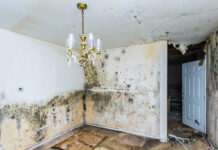Soil Testing Near Eaton, Palisades Fires Raises Concerns
After the devastating fires that swept through Eaton and Palisades earlier this year, residents have been left grappling with lingering questions about the potential fallout. Recently, the Los Angeles County Department of Public Health unveiled the preliminary results of soil testing conducted in and around the burn areas, shedding light on the concerning levels of contamination detected.
During a virtual community meeting held on Thursday evening, officials shared the findings of the soil testing initiative, carried out by Roux Associates, a private testing firm hired by the county. Over the course of four weeks, from mid-February to mid-March, samples were collected from 780 properties within the burn zones. These samples were then analyzed for a variety of toxic substances commonly associated with wildfires, including heavy metals like arsenic and lead, polyaromatic hydrocarbons, and dioxins.
Lead Levels Raise Alarms in Eaton Burn Scar
One of the most significant revelations from the initial batch of results was the presence of elevated lead levels in soil samples collected downwind of the Eaton fire. In fact, up to 80% of the samples from properties in this area exceeded the state health standard of 80 milligrams of lead per kilogram of soil. Adam Love, Roux’s vice president and principal scientist, noted that the percentages of lead exceedance were particularly high in areas immediately downwind of where the main houses burned in the Eaton fire.
The data indicated that 36% of parcels within the Eaton burn scar surpassed the state limit for lead, with an even higher percentage, 47%, exceeding it in areas just beyond this boundary. In the southwest section of the Eaton fire zone, between 70% and 80% of properties tested showed lead levels above the health standard.
While the presence of lead in older homes due to lead paint is not uncommon, Love emphasized that the scale of lead contamination detected in the soil following the fires suggests that other sources, likely related to the fire and its smoke, are also contributing to the toxicity.
The Impact of Arsenic in the Palisades
In contrast to the findings in the Eaton burn scar, the Palisades fire burn zone did not exhibit widespread contamination. However, isolated “hot spots” of heavy metals and polyaromatic hydrocarbons, including arsenic, were identified in soil samples. Arsenic, a known carcinogen, was found to be particularly prevalent just outside the fire boundary, with nearly 26% of parcels showing arsenic levels above the established background level.
Roux’s Love highlighted the unique distribution of arsenic in the Palisades area, with a concentrated hot spot in the northeast section. The source of these contaminants remains unclear, as they do not align with typical fire-related smoke plumes.
Seeking Solutions and Support
In response to these findings, officials are working to address the concerns raised by the soil testing results. Nichole Quick, chief medical adviser with the L.A. County Department of Public Health, emphasized the importance of engaging federal and state partners to further assess the hot spots identified in the Palisades. Additionally, efforts are underway to explore targeted lead testing in areas affected by the Eaton fire.
While the full extent of the contamination and its implications are still being evaluated, county residents are advised to take precautions when dealing with fire debris and ash. The Department of Public Health recommends consulting environmental professionals for property evaluations and encourages individuals to review soil sampling results to determine appropriate precautions.
As the community navigates the aftermath of the fires and grapples with the implications of soil contamination, the county is offering free lead blood-level screening for individuals impacted by the disasters. By prioritizing safety and awareness, residents can take proactive steps to safeguard their health and well-being in the face of environmental challenges.
The results of the soil testing initiative will continue to inform ongoing efforts to mitigate the impact of the fires and protect the community from potential health risks. Stay tuned for further updates and guidance as experts work to address the aftermath of the Eaton and Palisades fires.














